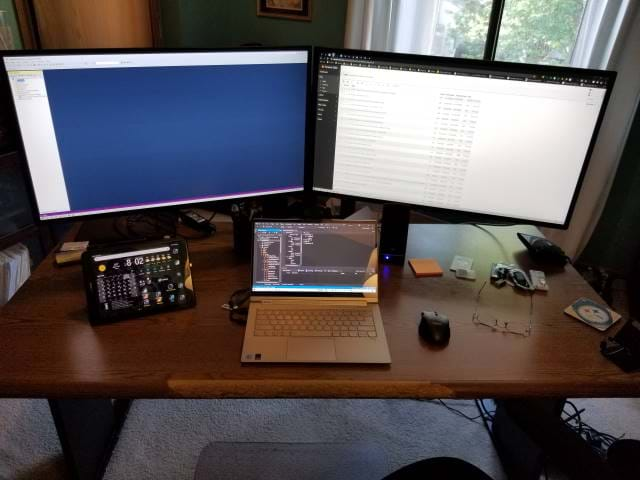
Visual Flow in Written Content
In today’s digital age, content is king, but its presentation often matters just as much as the message itself. Whether you’re writing a blog post, an article, or a product description, the way your content is presented visually can make or break the reader’s experience. This is where the concept of visual flow comes into play.
Visual flow refers to the natural path the reader’s eyes follow when they engage with your content. The arrangement of text, images, headings, and other elements determines how easily the information is absorbed. A well-designed visual flow can keep readers engaged, enhance their understanding, and encourage them to read all the way to the end.
This blog post explores why visual flow is crucial in written content and offers practical tips for improving it.
Why Visual Flow Matters
- Engagement and Retention
One of the primary reasons visual flow is so important is its ability to engage and retain the reader. With the constant influx of information online, people’s attention spans are shorter than ever. Studies show that readers often skim content, looking for information that stands out or catches their eye. If the visual flow of your content is poor, readers may find it hard to focus, and they’re more likely to abandon your page.
A well-organized layout with a clear visual flow helps direct the reader’s eyes to key points, guiding them through the content in a natural and effortless way. When the visual experience is smooth and appealing, readers are more likely to stay engaged and absorb the information you’re sharing.
To better understand how effective visual design can boost content engagement, consider exploring this opinion piece at https://www.skool.com/opinion-7077, where experts delve into the psychology behind content flow and its impact on user experience.
- Improved Readability
Text-heavy content can be overwhelming and difficult to read, especially when it’s presented in large blocks without any breaks or hierarchy. By using effective visual flow techniques, such as breaking up the text with headings, subheadings, bullet points, and images, you create a structure that is easier on the eyes. This not only makes the content more digestible but also helps readers navigate through the material and understand it better.
The layout and design of the content play a major role in this. For example, well-chosen fonts, proper line spacing, and appropriate text sizes can make a huge difference in readability. Additionally, strategically placed images or graphics can break up long paragraphs, giving the reader’s eyes a break and adding a layer of visual interest.
- Content Structure and Hierarchy
Visual flow also influences the content’s structure and hierarchy. Just as in writing, the way information is organized visually helps readers understand the most important points. If readers can’t easily distinguish between headings, subheadings, and body text, they may struggle to understand the key takeaways of the content.
By using typography, colors, and positioning effectively, you can create a clear distinction between different types of content. For example, bold or larger text for headings, italics for emphasis, and a consistent layout help establish a visual hierarchy that reinforces the written message.
- Better User Experience (UX)
When visitors land on your page, their experience will be shaped by how easy it is for them to consume your content. If the layout feels cluttered or chaotic, it could frustrate the user, leading to a poor overall experience. On the other hand, if the content is well-organized with a clear visual flow, users will feel comfortable navigating and interacting with it.
In web design, this concept extends beyond just the text. The spacing between elements, alignment of text and images, and even the colors you use all contribute to the visual flow. For instance, ensuring that there’s enough contrast between the background and text makes your content more legible, while using white space can give the page a clean, uncluttered look.
- Visual Flow Enhances SEO and Conversion Rates
You might not immediately think of visual flow when considering SEO (Search Engine Optimization), but it plays a crucial role. User experience and engagement are significant ranking factors for search engines. If visitors leave your page quickly because the content is difficult to read, your SEO ranking could drop.
Moreover, good visual flow is directly linked to conversion rates, especially on landing pages and product descriptions. If a page is well-designed and easy to read, visitors are more likely to stay longer and take the desired action, whether that’s making a purchase, signing up for a newsletter, or clicking through to another page.

Tips for Improving Visual Flow
Now that we’ve established why visual flow is essential, let’s discuss some practical tips for improving it in your written content:
1. Use Clear Headings and Subheadings
Headings and subheadings serve as road signs guiding your readers through your content. They break up the text and provide a quick preview of what each section is about. Make sure your headings are clear, concise, and descriptive. Use them to highlight the main points of each section, ensuring that they logically lead the reader through the article.
2. Utilize White Space
White space (also called negative space) is the area between elements on the page. It’s not empty space; it’s vital for improving readability and creating a clean, organized look. Don’t overcrowd your content. Ensure there’s enough breathing room between paragraphs, images, and other elements to prevent the page from feeling overwhelming.
3. Incorporate Visual Elements
Visual elements like images, videos, infographics, and illustrations can break up text and provide a welcome visual break for readers. They also help clarify complex information and make the content more engaging. However, be strategic with their placement. Use them to complement the text and enhance your message, not just for decoration.
4. Choose Readable Fonts and Sizes
The typeface and font size you choose can greatly affect the readability of your content. Choose fonts that are easy to read on both desktop and mobile devices. Sans-serif fonts like Arial or Helvetica are usually a safe bet for online content. Make sure the font size is appropriate for both headings and body text. Too small, and it becomes hard to read; too large, and it can feel overwhelming.
5. Use Color Strategically
Color can be a powerful tool for guiding the reader’s attention. Use contrasting colors for headings and subheadings to make them stand out. You can also use color to highlight important information or call-to-action buttons. But be mindful of accessibility—ensure that there is enough contrast between the text and background to make it legible for everyone, including people with visual impairments.
6. Prioritize Mobile Responsiveness
With the majority of web traffic coming from mobile devices, it’s crucial to ensure that your content is optimized for smaller screens. Test how your content looks on mobile to ensure the visual flow remains effective. This includes checking that images are properly sized, headings are easy to read, and text isn’t too cramped.
7. Maintain Consistency
Consistency in design helps create a seamless reading experience. Use the same font styles, colors, and formatting throughout the content to avoid confusion and make the layout easier to follow. A consistent design will help the reader feel comfortable and focused, rather than distracted by inconsistency.
Conclusion
The visual flow of your written content has a direct impact on how it’s perceived and understood. By paying attention to how your content is laid out, you can make the reading experience smoother, more engaging, and easier to navigate. Whether you’re writing a blog post, an article, or a landing page, applying these tips can significantly improve how your content is consumed and increase its effectiveness.
Remember, visual flow isn’t just about making your content look pretty—it’s about creating a user-friendly experience that keeps your readers engaged and makes your message more accessible. When the visual flow is right, your words can have an even greater impact.
